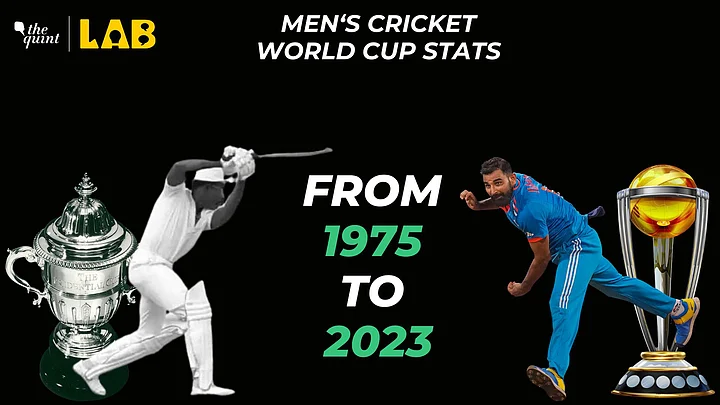As the 13th edition of the ICC Men's Cricket World Cup concluded in India, we take a look at some key parameters and see how the cricket's biggest tournament has evolved from its first edition in 1975 to the latest one in 2023.
Has the average runs scored per innings increased? Are batsmen scoring more runs and bowlers taking less wickets? How many times has the prize money increased between 1975 to 2023? Find out in the below infographic
Average Runs Scored Per Innings
Average runs scored per innings have increased from 205 in the 1975 World Cup in 1975 to 257 in the 2023 World Cup.
From 1975 to 1983, ODI World Cup matches had 60 overs per innings. This reduced to 50 overs per innings from 1987 onwards.
Two main factors affecting the average innings score include are the differing batting conditions of the host nations and the number of participants.
For instance, the 2003 World Cup held in South Africa, which saw participation of 14 nations, saw a lower average. The participants included weaker teams. Whereas the 2019 World Cup in England and Wales had a higher average as only top 10 teams played the tournament.
Average Runs Scored Per Over
Average runs scored per over saw a 61% increase from 3.91 in the 1975 World Cup to 5.82 in the 2023 World Cup.
This means that batsmen are now scoring more than before. But does that mean bowlers have not taking enough wickets?
Average Wickets Fallen Per Match
The World Cups of 1992 and 1996 were the worst for the bowlers with just 13.17 and 13.16 average wickets fallen per match respectively in each edition. The 2023 World Cup proved to be the best one with an average of 15.18.
Average Runs Per Wicket
At 25.58, average runs per wicket was the lowest in 1979 World Cup. It rose to 33.79 in the 2019 World Cup.
Prize Money For the Winning Team
The prize money for the winning team rose 45 times in 45 years from 1975 to 2019.
The 2023 edition was the first World Cup when the prize money didn't see any rise from the previous World Cup.
